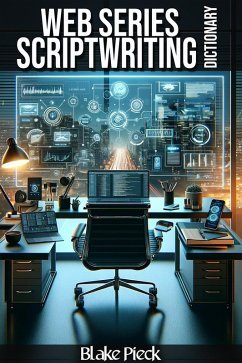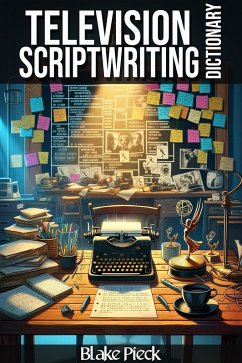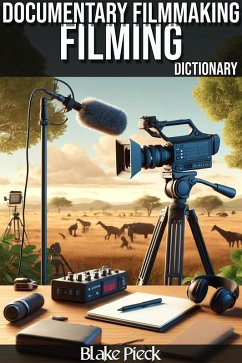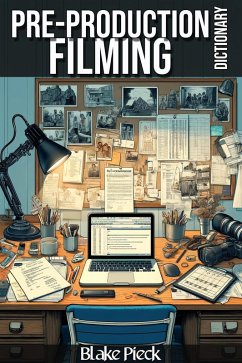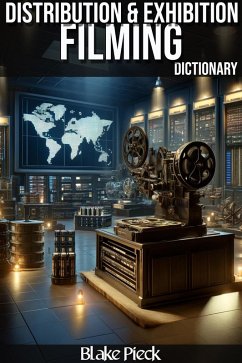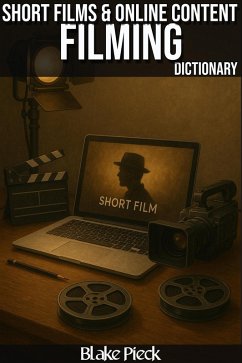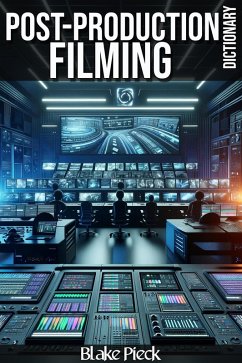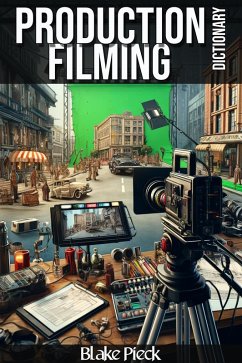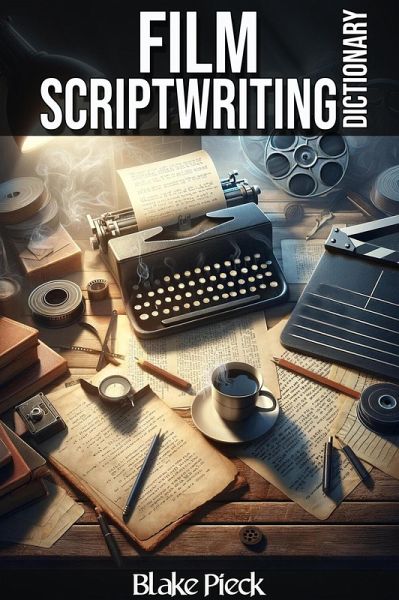
Film Scriptwriting Dictionary (Grow Your Vocabulary) (eBook, ePUB)

PAYBACK Punkte
0 °P sammeln!
This book is a comprehensive guide to the essential elements of writing scripts for films. From crafting compelling dialogue to creating vivid visual descriptions, this dictionary provides aspiring and experienced screenwriters with the tools and techniques needed to write scripts that captivate audiences and bring stories to life on the screen.Through clear and concise entries, the Dictionary provides readers with a comprehensive and accessible reference to the key concepts and techniques used in writing scripts for films. Whether you're a beginner looking to learn the basics or a seasoned pr...
This book is a comprehensive guide to the essential elements of writing scripts for films. From crafting compelling dialogue to creating vivid visual descriptions, this dictionary provides aspiring and experienced screenwriters with the tools and techniques needed to write scripts that captivate audiences and bring stories to life on the screen.
Through clear and concise entries, the Dictionary provides readers with a comprehensive and accessible reference to the key concepts and techniques used in writing scripts for films. Whether you're a beginner looking to learn the basics or a seasoned professional seeking to refine your craft, this dictionary is an invaluable resource for mastering the art of film scriptwriting.
Screenplay Structure: This section explores the fundamental structure of a screenplay, including the three-act structure, plot points, and character arcs. Topics include the importance of inciting incidents, turning points, and resolutions in creating a well-structured screenplay, as well as techniques for pacing and balancing different story elements.
Dialogue Writing: Here, readers will delve into the art of writing engaging and realistic dialogue for film. Topics include character voice, subtext, and dialogue formatting, as well as techniques for writing dialogue that reveals character, advances the plot, and creates memorable moments on screen.
Action and Description: This section focuses on writing clear and evocative action and description in a screenplay. Topics include techniques for creating visual and dynamic action scenes, writing effective scene descriptions, and using descriptive language to engage the reader and convey the tone and atmosphere of the film.
Visual Storytelling: Readers will learn about the importance of visual storytelling in film and how to use visual elements to enhance the narrative. Topics include the use of imagery, symbolism, and visual motifs to convey themes and emotions, as well as techniques for creating visually striking scenes that resonate with audiences.
Formatting and Industry Standards: This section covers the proper formatting and industry standards for writing a screenplay. Topics include screenplay formatting rules, industry-standard software, and guidelines for submitting scripts to agents, producers, and competitions.
Through clear and concise entries, the Dictionary provides readers with a comprehensive and accessible reference to the key concepts and techniques used in writing scripts for films. Whether you're a beginner looking to learn the basics or a seasoned professional seeking to refine your craft, this dictionary is an invaluable resource for mastering the art of film scriptwriting.
Screenplay Structure: This section explores the fundamental structure of a screenplay, including the three-act structure, plot points, and character arcs. Topics include the importance of inciting incidents, turning points, and resolutions in creating a well-structured screenplay, as well as techniques for pacing and balancing different story elements.
Dialogue Writing: Here, readers will delve into the art of writing engaging and realistic dialogue for film. Topics include character voice, subtext, and dialogue formatting, as well as techniques for writing dialogue that reveals character, advances the plot, and creates memorable moments on screen.
Action and Description: This section focuses on writing clear and evocative action and description in a screenplay. Topics include techniques for creating visual and dynamic action scenes, writing effective scene descriptions, and using descriptive language to engage the reader and convey the tone and atmosphere of the film.
Visual Storytelling: Readers will learn about the importance of visual storytelling in film and how to use visual elements to enhance the narrative. Topics include the use of imagery, symbolism, and visual motifs to convey themes and emotions, as well as techniques for creating visually striking scenes that resonate with audiences.
Formatting and Industry Standards: This section covers the proper formatting and industry standards for writing a screenplay. Topics include screenplay formatting rules, industry-standard software, and guidelines for submitting scripts to agents, producers, and competitions.
Dieser Download kann aus rechtlichen Gründen nur mit Rechnungsadresse in A, B, CY, CZ, D, DK, EW, E, FIN, F, GR, H, IRL, I, LT, L, LR, M, NL, PL, P, R, S, SLO, SK ausgeliefert werden.




